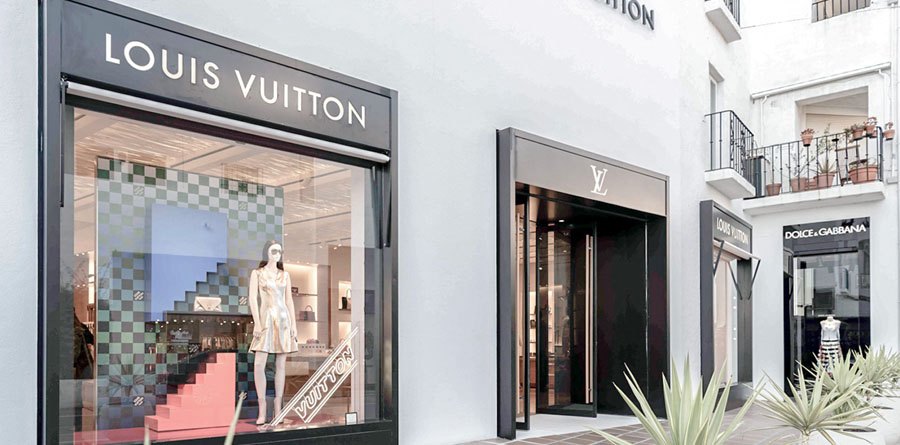What is Global Wealth Migration?
Global Wealth Migration refers to a significant trend wherein affluent entrepreneurs and investors—defined as those possessing liquid investable assets exceeding $1 million—relocate their businesses and families to emerging "hot spot" destinations worldwide. Key motivations driving this migration include enhanced quality of life, superior education opportunities, security, mobility, and tax advantages.
The pace of this migration has accelerated markedly since the COVID-19 pandemic, influenced by substantial shifts in the global political and social landscape, alongside evolving wealth investment strategies.
In 2024, an unprecedented 128,000 millionaires are projected to relocate, surpassing the previous record of 120,000 set in 2013. This reflects a 16% increase from the 110,000 who emigrated in 2019, prior to the pandemic.
These affluent individuals are pursuing the ultimate freedom: the ability to choose their residence, travel at will, and raise their families in secure environments, all in pursuit of the highest quality of life available globally.
This trend shows no signs of abating. Countries around the globe are increasingly recognizing the benefits of attracting these global citizens and employing investment migration strategies to entice them to invest and establish operations in various wealth hubs. This symbiotic relationship yields mutual benefits for both the destination and the migrating millionaires.
Countries are implementing attractive residency options, such as "golden visas," along with significant tax incentives and robust educational and lifestyle infrastructures to entice these high-net-worth individuals.
What Impact Does Migration Have?
Dominic Volek of Henley & Partners, a leading authority in Residency & Citizenship by Investment, notes that this influx of millionaires signifies a profound transformation in the global wealth and power dynamics, with far-reaching consequences for both their countries of origin and their new host nations.
These wealthy migrants not only carry their fortunes but also their expertise and networks, which can have a substantial impact on the economic vitality of their chosen destinations.
Conversely, countries such as China, the UK, and India are experiencing significant outflows of millionaires. While China and India are producing new millionaires at a pace that outstrips their emigration, the UK faces a decline, with an anticipated outflow of approximately 9,500 millionaires by the end of 2024 and no emerging generation to replace them.
Redefining Super Wealth with Centi-Millionaires
Another critical factor influencing global wealth is the redefinition of "super-wealthy." Over the past decade, the threshold for being classified as super-rich has escalated dramatically, rising from $30 million in the late 1990s to $100 million today. According to a recent report by Henley & Partners, this exclusive group—known as centi-millionaires—has expanded by more than 50% over the last decade, with 29,350 individuals globally possessing liquid investable assets of $100 million or more.
The geographical distribution of this wealth is revealing. One-third of the world’s centi-millionaires reside in 50 key cities, with nearly two-thirds of these wealth hubs located in countries offering robust investment migration programs. This concentration underscores the interconnected nature of global wealth and the appeal of strategic residence and citizenship planning.
The United States continues to dominate the centi-millionaire landscape, securing the top three positions in the ranking of cities with the highest number of centi-millionaires and boasting a total of 15 metropolises in the top 50 list.
Asian cities are rapidly emerging as significant centers for global super-wealth, while Europe is experiencing a decline in representation among the centi-millionaire cohort. London, once viewed as the financial capital of the world, now ranks 4th, while Paris holds the 10th position, with Nice being the only other French city in the top 50, home to 95 centi-millionaires.
Where Are the Ultra-Wealthy Investing?
According to Tiger 21, a premier membership organization for ultra-high-net-worth individuals, despite mixed signals in the economy, the ultra-wealthy are investing heavily in long-term assets, with 76% of their portfolios allocated to real estate, public equity, and private equity.
As global economies evolve, ultra-high-net-worth individuals are increasingly seeking diversification in their assets and lifestyle options. The appeal of owning multiple properties worldwide, especially among centi-millionaires, is significant, with over 90% owning more than one residence and approximately 65% possessing second homes outside their country of origin.
Investment migration programs linked to real estate present unique opportunities for this elite group. These programs not only offer attractive returns through property appreciation and rental yields but also provide the added advantage of alternative residency and citizenship options. Many countries that offer residence or citizenship through investment programs boast appealing real estate markets, making them prime destinations for centi-millionaires looking to secure additional residences or citizenship.
Consequences of high-end migration on Marbella and Estepona
Marbella, situated on the Costa del Sol, is also gaining attention. It is included in Henley & Partners’ ‘Safe Haven 8,’ which identifies locations that have successfully revitalized their economies by attracting wealthy migrants. The region has witnessed substantial investments from international designers like Fendi, Karl Lagerfeld, and Dolce & Gabbana, and Rafael Nadal is collaborating with a developer to create 200 branded villas.

Global Wealth Migration significantly impacts Marbella and the broader Costa del Sol region in various ways. Here’s a detailed analysis of how this trend shapes the area:
1. Luxury Real Estate
- Increased Demand for Luxury Properties: The influx of wealthy individuals has led to a surge in demand for high-end real estate. Marbella is particularly popular for its luxury villas, beachfront apartments, and gated communities, driving up property prices.
- Development of New Projects: Developers are responding to this demand by constructing new luxury properties and resort-style developments, often featuring modern amenities and exclusive services.
- Rental Market Growth: High-net-worth individuals often invest in properties for rental income. This has boosted the short-term rental market, particularly during peak tourist seasons, benefiting local economies.
2. Economic Growth
- Job Creation: The increased demand for luxury services, real estate, and hospitality leads to job creation in various sectors, including construction, property management, and service industries.
- Investment in Local Businesses: Wealthy residents tend to spend on local businesses, from high-end retail to fine dining, stimulating economic growth and encouraging new businesses to open.
3. Enhanced Lifestyle Offerings
- Luxury Amenities and Services: The presence of affluent residents encourages the development of luxury amenities, including high-end restaurants, exclusive beach clubs, and premium healthcare services.
- Cultural and Recreational Opportunities: Marbella and the Costa del Sol increasingly host international events, festivals, and art exhibitions, enhancing the cultural landscape and attracting tourists and residents alike.
4. Tax Revenues
- Increased Tax Contributions: Wealthy migrants contribute to local tax revenues, which can support public services, infrastructure, and community development. This is particularly beneficial for municipalities in Marbella and the Costa del Sol.
- Investment Migration Programs: The Spanish Investor Visa program attracts wealthy individuals who invest, leading to additional tax revenues and stimulating the economy.
5. Cultural Diversity
- Multicultural Environment: The arrival of wealthy migrants from various countries enriches the cultural fabric of Marbella and the Costa del Sol. This diversity fosters international connections and can lead to a more vibrant community.
- Culinary and Artistic Influences: Increased cultural diversity often results in a flourishing culinary scene and new artistic expressions, as international chefs and artists contribute to the local culture.
6. Infrastructure Development
- Improved Infrastructure: As demand for high-quality services increases, local governments may invest in infrastructure improvements, including transportation, public spaces, and utilities, enhancing the overall quality of life.
- Enhanced Connectivity: The growth of international residents can lead to better air travel and transportation options, as demand increases for connections to major cities worldwide.
7. Tourism
- Attraction of Affluent Tourists: The presence of wealthy residents attracts more high-end tourists seeking luxury experiences, further benefiting local businesses and tourism-related sectors.
- Year-Round Tourism: Marbella’s appeal as a luxury destination helps to sustain tourism throughout the year, rather than being limited to the peak summer months.
8. Social Dynamics
- Community Engagement: Wealthy migrants often engage in local philanthropy, contributing to social programs, cultural initiatives, and community development projects, which can enhance community cohesion.
Conclusion
Overall, Global Wealth Migration significantly impacts Marbella and the Costa del Sol, creating opportunities, fostering economic growth, and enhancing the overall quality of life. By implementing proactive planning and inclusive policies, stakeholders can maximize the benefits of this trend while ensuring a balanced and sustainable future for both new residents and local communities.
Register today to our Guadalmansa Insider Newsletter and get all the latest updates & news about the Guadalmansa area in your inbox.
Sources: https://www.henleyglobal.com/
